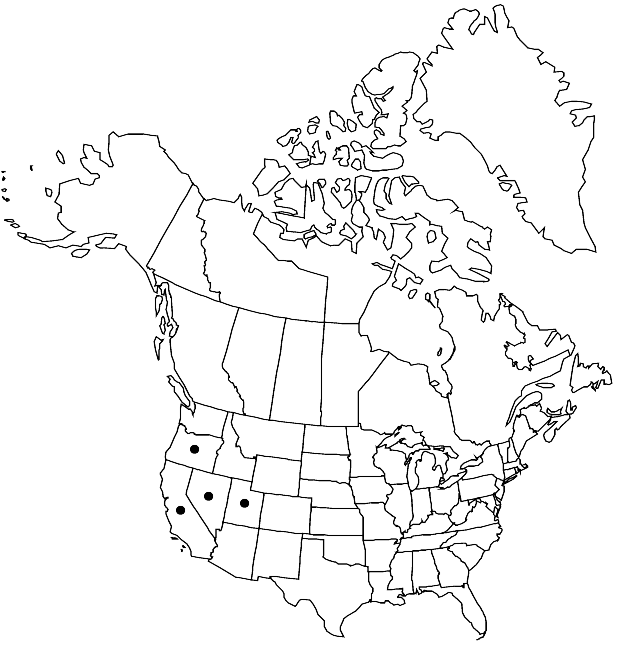Boechera puberula
Brittonia, 55: 3. 2003.
Perennials; short-lived; sexual; caudex not woody. Stems usually 1 per caudex branch, arising from center of rosette near ground surface, (1–) 2–6.3 dm, densely pubescent proximally, trichomes short-stalked, 3–8-rayed, 0.1–0.3 (–0.5) mm, similarly pubescent distally. Basal leaves: blade oblanceolate to linear-oblanceolate, 1.5–5 mm wide, margins usually dentate, not ciliate, surfaces densely pubescent, trichomes short-stalked, 5–12-rayed, 0.05–0.2 mm. Cauline leaves: 7–45 (–65), concealing stem proximally; blade auricles absent or 0.7–3 mm, surfaces of distalmost leaves pubescent. Racemes 10–40 (–64) -flowered, usually unbranched. Fruiting pedicels pendent, recurved distal to horizontal to ascending base, 4–10 mm, pubescent, trichomes appressed, branched. Flowers ascending to descending at anthesis; sepals pubescent; petals white to lavender, 5–9 × 0.8–1.8 mm, glabrous; pollen ellipsoid. Fruits closely pendent, rarely appressed to rachis, sometimes somewhat secund, usually straight, edges parallel, 3–6.5 cm × 1.9–2.2 mm; valves pubescent throughout; ovules 38–64 per ovary; style 0.05–0.1 mm. Seeds uniseriate, 1.4–1.8 × 1–1.4 mm; wing continuous, 0.1–0.3 mm wide. 2n = 14.
Phenology: Flowering Apr–Jul.
Habitat: Ledges, rocky slopes, gravelly hillsides in sagebrush, pinyon-juniper, and mountain shrub communities
Elevation: 1300-2900 m
Distribution

Calif., Nev., Oreg., Utah.
Discussion
Boechera puberula is a diploid species that appears to intergrade with both B. retrofracta and B. subpinnatifida. The glabrous-fruited specimens discussed by R. C. Rollins (1993) represent apomictic hybrids with other species, primarily B. pendulocarpa.
Selected References
None.
Lower Taxa
"elongated" is not a number."thick" is not a number."dm" is not declared as a valid unit of measurement for this property."dm" is not declared as a valid unit of measurement for this property.
